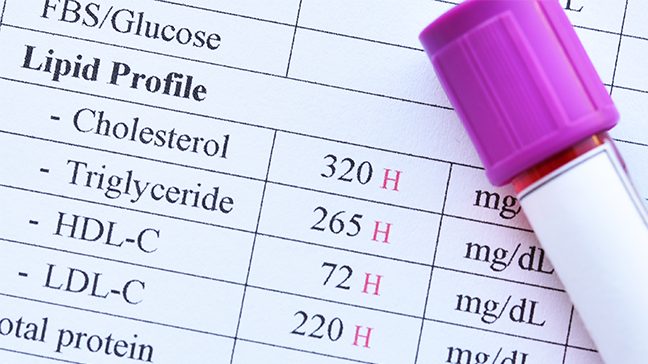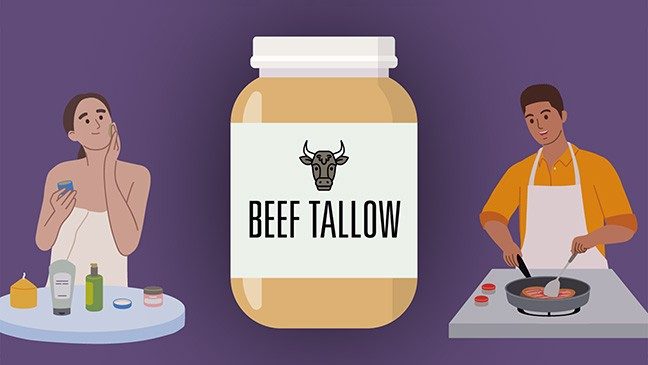- Manage Your Risk
- Diet
Your body runs on food. Foods affect how you feel, how your body operates and your risk for diseases like cancer.
No food or food group can prevent cancer and excluding specific foods won’t eliminate your risk. But eating meals rich in healthy foods like vegetables, whole grains, beans and fruit and following some basic guidelines can help you reduce your risk for cancer and several other chronic diseases.
Eat healthy foods
Pack every meal with healthy and nutritious foods by filling at least two-thirds of your plate with vegetables, whole grains, fruits and beans. Nuts and seeds are good too. The remaining third of your meal is meat, fish or animal products like cheese and eggs, or try plant-based proteins like tofu.
Healthy meals can be tasty and exciting, no matter what type of food you like to eat. Take your favorite dishes and see where you can add more whole grains, vegetables, fruits, nuts and seeds.
Feed your body antioxidants
Whole grains, vegetables, fruits, beans, nuts and seeds are important for your body because they contain antioxidants. Antioxidants are compounds that protect plants from disease and when you eat these plant foods, you benefit too. They help repair your cells and remove toxins you may have absorbed during your daily life, including toxins from pollution, bacteria and viruses, and additives and preservatives in processed foods. They also have anti-inflammatory properties.
Antioxidants are sometimes called phytochemicals and are in every kind of vegetable and fruit, plus some herbs and spices too. The color of the vegetable or fruit signals the type of phytochemical it includes.
- Green and cruciferous vegetables like broccoli, cauliflower, kale, Brussels sprouts and arugula are high in vitamins A, C and K. They are also high in fiber, sulforaphane and folate.
- Bright red, orange and yellow foods like tomatoes, sweet potatoes, pumpkins, peppers and carrots are high in beta-carotene, lycopene, vitamins A and C, potassium and more.
- Dark purple foods like eggplants, berries, grapes, plums, beets, purple carrots and red cabbage contain a group of antioxidants called anthocyanins among other vitamins and minerals.
- White foods like mushrooms, garlic, cauliflower, onions and artichokes are high in anthoxanthins as well as other vitamins and minerals.
Fill up on fiber
Unprocessed vegetables, fruits, whole grains and beans also are the best source of fiber. Adding high fiber foods to your diet can help reduce your cancer risk. Here are all the benefits of fiber:
- Feeling full longer. Dietary fiber includes a form of carbohydrate that people can’t digest. The fiber slows the speed at which food and drink leave your stomach. So, you stay full longer after each meal or snack.
- Weight control. Many high-fiber foods are low-calorie and packed with nutrients. That’s good news, since maintaining a healthy weight is one of the most important factors in reducing your risk of cancer and other diseases.
- Lower cholesterol. Some fibers help prevent fat and cholesterol absorption, helping you lower your cholesterol over time.
- Stabilized blood sugar levels. Diabetic? Or at risk of becoming diabetic? Fiber can positively influence blood sugar levels by slowing how quickly sugar gets into your blood stream.
- Bowel management. Have digestive problems? Adding fiber to your diet can help protect your intestinal lining and make bowel movements easier or more frequent.
Include lean proteins
Eating more healthy foods does not mean you must be vegan or vegetarian. Meals that includes lean animal proteins like chicken and fish, as well as plant proteins, have been proven to reduce your risk for cancer.
Red meats like beef, pork and lamb can be included in moderation. Here are some guidelines for consuming red meat:
- Eat no more than 18 ounces of red meat per week. Each serving should be around three ounces, which is about the size of a regular deck of cards.
- Avoid burning or charring your meat because it creates compounds in the meat that have been linked to cancer. Use slow, low temperature cooking methods like baking or roasting. If you grill your meat, marinate it and finish off cooking in the oven or microwave.
Eat little, if any, processed meat like deli meats, hot dogs and bacon because they have been linked to colorectal cancer.
Follow the sugar stoplight
When it comes to sugar and artificial sweeteners, use the sugar stoplight to help balance how much you eat.
- Natural sugars are safe to eat. Any sugar that is naturally occurring in a food gets the green light. That includes sugar in fruit and starchy vegetables, as well as whole or minimally processed carbohydrates like brown rice and whole grain pasta. Sugar in dairy products like milk and cheese is OK, too.
- Added sugar should be eaten in moderation. Foods with added sugar get the yellow light. That includes the cane sugar in your yogurt, the honey or syrup in your granola bar, as well as the agave you might put in a drink. Added sugar can also appear in foods like bread and pasta sauce.
- Refined or processed sugar should be limited. Eat red light foods as little as you can because they contain a lot of processed sugar. One candy bar or piece of cake can contain around 30 grams of added sugar. Eating these foods regularly leads to weight gain and other problems. Sodas and sweetened beverages get the red light, too, even if they use artificial sweeteners.
Be aware of sugar spikes
All carbohydrates you eat are turned to sugar – it’s the main energy source for your body. But for some carbs, this process takes longer, which gives your body more time to deal with the sugar. This is why brown rice, whole wheat pasta and whole wheat bread are healthier for you. The extra fiber slows down digestion, helps you avoid a sugar spike and makes you feel full for longer. The refined white versions will strain your pancreas and likely make you want to eat more.
Simple swaps to avoid sugar spikes include switching from fruit juice to eating whole fruit or switching out sugary jelly for sugar-free peanut butter on your toast.
Limit alcohol
For cancer prevention, it’s best not to drink alcohol. Alcohol is a toxin and drinking any amount can damage your body and increase the risk for several cancers, including oral cancer, throat cancer, colorectal and esophageal cancers, as well as liver and breast cancers.
Alcohol also can change the balance in your gut microbiome, which supports your immune system and regulates inflammation.
If you choose to drink, be aware of the risks, aim to drink less often and have fewer drinks. The less you drink, the lower your cancer risk.
Tips for moving toward a healthy diet
Start slowly – look for progress, not perfection.
Assess your current diet – how much comes from whole grains, veggies, fruits, nuts and seeds? How much comes from meat? How much is from whole foods? How much is processed foods?
You are more likely to stick with changes if they happen in small, simple steps rather than one giant change.
Choose a small first step that is realistic for you and one you can make successfully. Here some ideas:
- Increase the amount of fruits and vegetables you eat. This might be by increasing the percentage of produce on your plate at each meal or the number of servings per day.
- Eat the rainbow daily or weekly to add more color to your diet. If you aim to eat the rainbow, you will automatically increase the amount and variety of fruits and veggies in your diet.
- Snack on healthy foods, such as fruits, vegetables, nuts and seeds. Switching up snacks is a simple way to move toward healthy eating.
- Reduce intake of red and processed meats by choosing fish, seafood or poultry, or going meatless more often. There are many great plant-based protein options such as beans, lentils, peas and tofu. Eat them a few times per week.
- Choose whole grains or other whole food carbohydrates rather than processed carbohydrates at meals. Try spaghetti squash or veggie noodles instead of pasta. Switch to brown rice or quinoa instead of white rice.
- Eat salad as your meal. Top it off with nuts, seeds or beans as a protein source.
- Eat fruit for dessert.
Featured Articles

Beans 101: What to know and why it matters

Hyperlipidemia: 8 things to know about high cholesterol and cancer

Is allulose a healthy sugar substitute?

Are energy drinks healthy?

How much water should you drink a day?

Colon cleanse: Health or hype?

Food allergies vs. cancer symptoms: How can you tell the difference?

Processed meat and cancer: What you need to know
Cancer Prevention Center
BMI Calculator
Body Mass Index (BMI) is a tool to help you determine if you are a healthy weight. Fill out the fields below to get your BMI.
| BMI | Classification |
|---|---|
| Less than 18.5 | Underweight |
| 18.5 - 24.9 | Healthy |
| 25 - 29.9 | Overweight |
| 30 or higher | Obese |
Your BMI indicates that you are underweight. Talk to your doctor about ways to maintain a healthy weight. No matter what your weight is, eating a plant-based diet and staying physically active can reduce your risk for cancer.
Your BMI is in the normal range. If you have questions or concerns about your BMI or maintaining a healthy weight, talk to your doctor. No matter what your weight is, eating a plant-based diet and staying physically active can reduce your risk for cancer.
Your BMI is in the overweight range. Maintaining a healthy weight is one of the most important things you can do to reduce your risk of cancer and other chronic diseases. You can take steps to maintain a healthy weight.
Your BMI is in the obese range. Maintaining a healthy weight is one of the most important things you can do to reduce your risk of cancer and other chronic diseases. You can take steps to maintain a healthy weight.
Portion sizes and your cancer risk
How meal planning can support a healthy diet
A plant-based diet can reduce your cancer risk
Beef tallow benefits: Should you use it?
It might sound funny that the same ingredient could be responsible for both supple skin and a crispy French fry. But beef tallow, a product made from cow fat, is popping up everywhere from the kitchen to the beauty aisle.
So, what should you know about beef tallow? We spoke to a dietitian and a dermatologist to learn more.
Podcast: Taking vitamins during cancer treatment
request an appointment online.
Help #EndCancer
Give Now
Donate Blood
Our patients depend on blood and platelet donations.
Shop MD Anderson
Show your support for our mission through branded merchandise.

